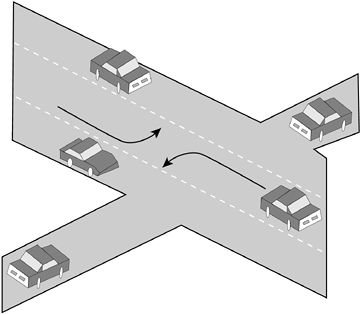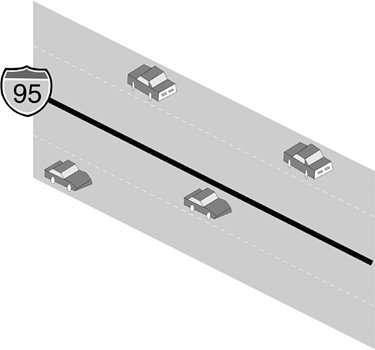Data Transmission Modes
Network devices use three transmission modes (methods) to exchange data, or "talk" to each other, as follows: simplex, half duplex, and full duplex.
Simplex transmission is like a one-way street where traffic moves in only one direction. Simplex mode is a one-way-only transmission, which means that data can flow only in one direction from the sending device to the receiving device. Figure 1-7 illustrates simplex transmission.
Figure 1-7. Simplex (One-Way Street)

Half-duplex transmission is like the center lane on some three-lane roads. It is a single lane in which traffic can move in one direction or the other, but not in both directions at the same time. Half-duplex mode limits data transmission because each device must take turns using the line. Therefore, data can flow from A to B and from B to A, but not at the same time. Figure 1-8 illustrates half-duplex transmission.
Figure 1-8. Half Duplex (Center Turn Lane)

Full-duplex transmission is like a major highway with two lanes of traffic, each lane accommodating traffic going in opposite directions. Full-duplex mode accommodates two-way simultaneous transmission, which means that both sides can send and receive at the same time. In full-duplex mode, data can flow from A to B and B to A at the same time. Figure 1-9 illustrates full-duplex transmission.
Figure 1-9. Full Duplex (Interstate Highway)

note
Full-duplex transmission is, in fact, two simplex connections: One connection has traffic flowing in only one direction; the other connection has traffic flowing in the opposite direction of the first connection. |






